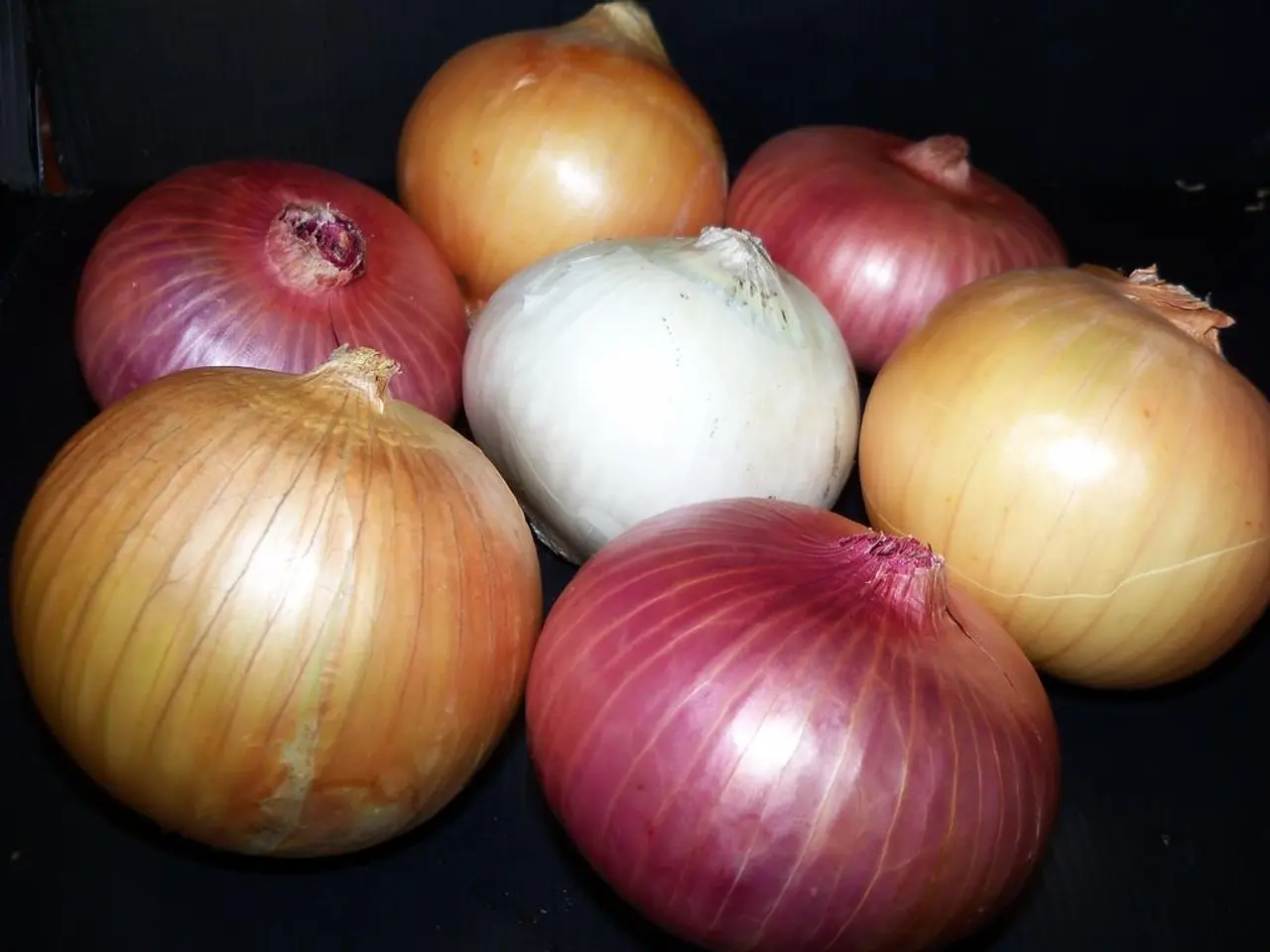Cultivating Garlic: A Step-by-Step Guide to Planting and Nurturing Garlic in Your Backyard Garden
Growing Garlic in Your Kitchen Garden
Garlic, a staple in many cuisines, is not only a flavourful addition to your meals but also a valuable plant for your garden. Here's a guide on how to grow garlic successfully in your kitchen garden.
Planting and Soil Preparation
To grow garlic, plant large cloves about 6 inches apart in loose, well-drained, fertile soil with a pH of 6–7. The soil should be sandy-loamy to prevent rot. Before planting, amend the soil with organic compost, aged manure, fish meal, or chicken manure for added nutrients.
Sunlight and Watering
Garlic thrives in full sun, so ensure your garden spot receives at least six hours of sunlight each day. Keep the soil consistently moist but not waterlogged, especially during active growth in spring. As the green shoots start to brown, indicating maturity, water less.
Fertilizing
Organic fertilizers such as blood meal, fish meal, or chicken manure can be used during planting and early spring for strong root and bulb development. Fertilize again in early spring as shoots emerge to promote bulb size.
Common Problems and Pest Management
Practice crop rotation yearly, avoiding planting garlic or related alliums in the same location for at least three years to minimize fungal diseases and pest buildup. Companion planting with tomatoes, peppers, kale, or certain herbs can deter pests. Mulch with straw or shredded leaves to preserve moisture, suppress weeds, and regulate temperature.
Harvesting and Curing
Harvest garlic when most leaves yellow and begin to dry, usually in mid to late summer. Cure bulbs by drying them in a warm, well-ventilated, shaded area for 3-4 weeks to extend storage life. After curing, trim roots and stalks before storing garlic in a cool, dry place.
Companion Plants
Good companions for garlic include tomatoes, peppers, kale, beets, and herbs like chamomile and thyme, which can enhance garlic health and repel pests. Avoid planting garlic near beans and peas, as they compete for nutrients.
Growing Garlic Indoors
Garlic can also be grown indoors with proper drainage, moisture control, and sufficient light exposure.
Health Benefits of Garlic
Garlic contains vitamins C and B6, manganese, selenium, and a chemical called allicin, which is thought to be responsible for its positive health effects. The British Heart Foundation states that garlic has long been associated with health benefits, including curing a cold, lowering blood pressure, and cholesterol levels.
Tips for Successful Garlic Growing
- Garlic plants require plenty of room to grow, with a bed or container at least a foot tall.
- Garlic cloves should be planted 2 inches deep, with a few inches between them, and with the fat end at the bottom and the root end at the top.
- In cold-winter zones, garlic can be planted in the fall and four to six weeks before the ground freezes. In milder climate zones, garlic can be planted through winter up until February.
- Remove flowering stems as they appear in spring and early summer to keep garlic bulbs growing larger.
- A dose of lime or fertilizer may be added to the soil before planting garlic.
With these tips, you can grow garlic successfully in your kitchen garden for cooking and seasoning purposes. Enjoy the benefits of fresh, home-grown garlic in your meals!
In your kitchen garden, consider companion planting garlic with tomatoes, peppers, kale, beets, and certain herbs like chamomile and thyme for a healthier and pest-resistant garden. Alternatively, grow garlic indoors with proper drainage, moisture control, and light exposure, especially through winter up until February in milder climate zones.




